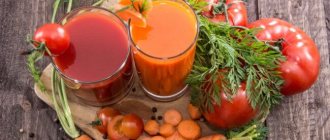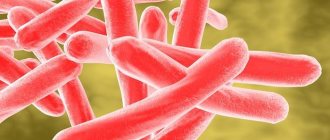What should be included in the menu for arthrosis? Prohibited foods for arthrosis How much water should you drink for arthrosis?
Although diet for arthrosis is not the main method of treatment, proper nutrition and measures for the general health of the body help the joints to recover. Doctors and patients note that when following a simple diet, degenerative changes progress more slowly and cause patients less anxiety. In addition, proper nutrition for arthrosis serves as its prevention in cases where there is a hereditary or professional predisposition.
A proper diet for arthrosis is the key to successful treatment.
Why do joints hurt?
Age is not the only reason for wear and tear on joints.
A sedentary lifestyle makes the situation worse. If a person moves little, beneficial substances do not reach the joints in the required quantities. The result is degenerative-dystrophic pathologies of the musculoskeletal system. The cartilage tissue that covers the joints becomes fragile, pain appears, stiffness of movement occurs, and problems with walking begin. Other reasons why joints hurt include:
- obesity: extra pounds create additional stress on the spinal column and cartilage;
- injuries: fractures, dislocations, sprains that damage the joint;
- diseases associated with metabolic disorders;
- autoimmune pathologies, in particular rheumatoid arthritis;
- prolonged loads, due to which the joints are overloaded, cartilage tissue is worn out, and the joint fluid becomes inflamed;
- bad ecology.
Separately, it is necessary to mention poor nutrition, which provoked a deficiency of nutrients. Excess fats, carbohydrates, and carcinogens destroy joints and do not allow them to renew themselves in a timely manner.
Spinach
Experiments show that the level of inflammatory cytokines in the blood is inversely proportional to the consumption of various types of leafy greens (including spinach).
Spinach contains many antioxidants, the most valuable of which is kaempferol. It blocks the effect of inflammatory mediators on cartilage and joint tissue.
One study conducted in 2021 demonstrated that there was a significant positive therapeutic effect when treating rheumatoid arthritis and arthrosis with kaempferol.
Spinach must be present in the daily diet of patients with joint pathologies. It has been proven that spinach inhibits inflammation and slows down the progression of cartilage tissue destruction, and also promotes their restoration.
Principles of proper nutrition for joint diseases
A diet for joint diseases should be healthy, balanced and tasty. The menu must be developed taking into account the disease that has affected the cartilage. For example, autoimmune diseases require a hypoallergenic diet. If you are overweight, you need to focus on losing weight.
When choosing a diet for joint pain, doctors recommend adhering to the following principles:
- The diet should provide the patient with the right amount of energy and nutrients. The recommended proportion is 25 kcal per 1 kg of weight. If a person needs increased energy expenditure (after surgery, injury), the number of calories is increased by 1.5–2 times.
- The most optimal diet for the body is a diet where 14% are proteins, 30% are fats, and 56% are healthy carbohydrates.
- Fats and carbohydrates cannot be ignored, but they must be consumed correctly.
- It is necessary to include vitamins, minerals, and dietary fiber in the diet. In case of illness, due to which the body loses many useful substances, it is necessary to compensate for this loss. For example, if calcium disappears quickly, you need to eat cottage cheese and yogurt.
- When drawing up a diet, it is necessary to take into account the metabolic rate and the body’s ability to absorb food.
For successful digestion of food, establish the correct diet for your joints. Doctors recommend eating small meals five times a day. Too long breaks between meals overload the gastrointestinal tract, since you need to digest a lot of foods consumed at one time. In addition, a hungry person becomes nervous, which has a bad effect on the functioning of the nervous system.
Broccoli
Since ancient times, broccoli has been considered one of the healthiest foods and has been used to treat many diseases.
According to the accumulated data of Chinese scientists, the plant reduces the concentration of inflammatory cytokines (tumor necrosis factor-a, interleukins 1 and 6). As a result, the course of the inflammatory reaction in the joints and its symptoms quickly disappear.
Broccoli contains a special component - sulforaphane. It, according to researchers, prevents the formation of immune cells that secrete inflammatory mediators.
Eating broccoli leads to a decrease in the severity of any inflammatory processes in the body. Positive properties have been proven specifically for joints.
Features of nutrition for sore joints
When choosing a diet for joints, you need to make sure that the menu contains elements that strengthen them, relieve inflammation, and accelerate regeneration. The emphasis should be on fish, lean meat, vegetables, and fruits.
Carbohydrates
It is necessary to monitor your weight, since extra pounds place increased stress on the joints. However, carbohydrates cannot be ignored. Their share in the menu should be 56%. Preference should be given to apples, berries, and grains (oatmeal, buckwheat, wheat). Healthy foods for joints include raw carrots, cabbage, green and leafy vegetables.
It is imperative to limit the consumption of carbohydrates with a high glycemic index. They are absorbed into the blood very quickly and, if there are too many of them, they go into fat reserves. The result is extra pounds.
The list of prohibited products includes sugar, including sweets, jam, marshmallows, sweet drinks, and honey. Beer, fried potatoes, and premium flour products are prohibited.
Salt
A diet for joint disease involves limiting salt. It retains water in the body, causing swelling of the joints. You cannot completely give up the mineral: its deficiency can provoke various pathologies.
Protein
A person should consume protein daily based on the calculation of 1 g per 1 kg of weight, but its share in the diet should not exceed 20%. Protein consists of muscles, immune cells and other substances that are involved in the renewal of bone and cartilage tissue. It contains collagen - the basis of cartilage, bones, tendons, and other elements of connective tissue.
Protein deficiency impairs the absorption of elements important for joints (including calcium) and healthy fats. Without it, heart function deteriorates and tissue regeneration occurs more slowly.
What foods are good for joints? The intake of protein into the body will be provided by lean meat, fish, and plants. Important: in order to avoid problems with the musculoskeletal system, you must avoid sausages, sausages, canned food, etc. They contain additives that are harmful to bones and joints.
Calcium and vitamin D
Another important material for joints is calcium, the main component of bones. If it is not enough, a person is prone to fractures, damage to cartilage tissue and ligaments. The spinal cord and nervous system also need it. Therefore, you need to make sure that your diet includes dairy products, nuts, dried fruits, green vegetables, and herbs.
Calcium itself is poorly absorbed - you need vitamin D. To do this, you should include herring, mackerel, cod liver, yolk, and butter in the menu.
Omega-3 polyunsaturated fatty acids
Fish, including fish oil, is a good product for joints. It contains omega-3 polyunsaturated fatty acids, which reduce inflammation of the joint fluid, relieve pain, and relieve symptoms of arthritis. They also slow down the process of cartilage destruction, which is indispensable for arthrosis.
Omega-3 polyunsaturated fatty acids regulate blood cholesterol levels. They prevent plaque from depositing on the walls of blood vessels, which improves the supply of nutrients to the joints.
Zinc
Zinc stimulates testosterone synthesis. This hormone is produced in both male and female bodies, but in different quantities. It actively participates not only in the development of the reproductive system, but also in the formation of the muscular corset, which is responsible for posture, the correct position of the spinal column, hips, and pelvis. It also improves the functioning of the immune system, which plays an important role in the rapid restoration of diseased joints.
Products with zinc for bones and joints include oysters, beef, crab, pork, and yogurt. Plants also contain it: baked beans, pumpkin seeds, sesame seeds, oatmeal.
Copper
It is necessary to include copper in the diet, which is found in nuts, mushrooms, liver, cereals, and dried fruits. The element takes an active part in the formation of connective tissue, energy production, and strengthening of the nervous system. Without it, posture is disrupted, ligaments weaken, and cartilage tissue is destroyed.
Vitamins for sore joints
Vitamins actively participate in metabolic processes, including improving the delivery of nutrients to tissues. Therefore, the diet must contain elements that are beneficial for the skeletal system:
- Vitamin A (beef liver, cod liver, natural margarine) - improves the production of collagen, which forms the basis of connective tissue. Its absence reduces bone density and causes osteoporosis.
- B vitamins (chicken, beef and pork liver, kidneys) - prevent osteoporosis, obesity, strengthen the immune system, nerves, heart, blood vessels. They are used to treat radicular syndromes that occur with spinal degeneration.
- Vitamin C (rose hips, sweet peppers, currants, sea buckthorn) - improves redox processes, stimulates immunity, collagen synthesis. Nutrition for arthritis must include vitamin C. Its deficiency results in weak ligaments, sore joints, and osteoporosis.
- Vitamin E (soybean, corn, sunflower oil, wheat, rye) - relieves pain and inflammation in the joint fluid. A diet for arthrosis of the knee joints must include this element.
- Vitamin K (spinach, cabbage, pumpkin) - deficiency of this vitamin causes loss of calcium in the urine, which leads to weak bones and joints.
To ensure that the body receives all the necessary elements, doctors recommend taking vitamin and mineral complexes twice a year. The beneficial substances in them are selected in the correct ratio, and improve each other’s digestibility.
Fatty fish
It is most beneficial to eat fish that contains large amounts of omega-3 fatty acids (salmon, sardines, trout, mackerel).
Omega-3 fatty acids have been shown to reduce pain and morning stiffness in patients with rheumatoid arthritis. Scientists recommend including fish in the course of mandatory non-drug therapy for arthritis.
One scientific study conducted in Finland showed that eating fatty fish for 8 weeks leads to a decrease in inflammatory mediators, and also reduces the risk of developing cardiovascular diseases and type II diabetes.
Sea fish is also an important source of vitamin D. Recently, more and more attention has been paid to the problem of deficiency of this biologically active substance, since it is presumably one of the risk factors for arthritis.
You should consume at least 2 servings of fish (200 g each) per week to maximize the anti-inflammatory properties. Such a diet also helps normalize the lipid profile and slow down the development of atherosclerosis.
Fatty fish, due to the presence of omega-3 fatty acids and vitamin D, help prevent the development of arthritis, reduce the severity of symptoms during their course, and also prevent the occurrence of pathologies in the cardiovascular system.
Vitamin D Products
For the first time, young mothers learn about vitamin D, since, according to doctors’ recommendations, they begin to give it to their one-month-old baby for rickets.
To compensate for the deficiency, you need to consume fish oil. Animal products, fish, mushrooms. To create balance in the body, add the following supplies to the menu:
- egg yolk (contraindication – high cholesterol);
- offal;
- butter, cheeses;
- fatty fish;
- caviar;
- canned cod liver: 100 g gives 1000% of the norm per day;
- mushrooms: chanterelles, oyster mushrooms, morels.
When preparing food, food should not be overcooked to preserve its value. Thaw meat, fish, and mushrooms gradually. Sea fish even in canned form retains its beneficial properties.
Mucopolysaccharides and collagen in food
Mucopolysaccharides maintain the required amount of hyaluronic acid. Collagen is the protein base of the bone component of the body. The body produces this substance on its own.
These necessary elements are contained:
- in seafood products;
- in veal cartilage broth;
- in aspic;
- in jelly;
- in the ear of a fish head.
Apple is a source of collagen. Use with peel. When organizing nutrition to strengthen the skeletal system, all facts are taken into account.
BROMELINE
Bromelain is a source of substances beneficial to the human body. He:
- eliminates swelling;
- relieves inflammation;
- prevents the development of cancer cells.
It is also useful for those who have recently experienced an injury, and for those who suffer from arthritis or inflammation of the joints. In addition, bromelain helps muscles recover after a hard workout. If you regularly attend workouts, bromelain will reduce muscle pain after exercise.
Grape
Grapes have antioxidant and anti-inflammatory properties, prevent the development of atherosclerotic changes in the walls of large vessels.
As a result of one experiment, it was proven that when consuming 250 g of fresh grapes daily for 3 weeks, there is a decrease in the concentration of inflammatory markers (adiponectin, interleukin 10) in the blood, which has a beneficial effect on the course of autoimmune diseases of the joint and ligamentous apparatus.
In addition, the skins of grapes, as well as wines based on them, contain a significant amount of resveratrol, a special substance that has a negative effect on the release of mediators of the inflammatory response into the bloodstream.
Grapes improve the clinical course of arthritis by inhibiting inflammatory processes.
Turmeric
Oriental spice is widely used in modern and folk medicine and cooking.
The effect of turmeric is ensured by the presence of curcumin, which relieves pain and reduces inflammation in the affected joints.
The effects of the plant are superior to those of selective cyclooxygenase-2 inhibitors. For example, 350 mg of turmeric extract shows better results than celecoxib. And 500 mg, according to scientists, is more powerful than 50 mg of diclofenac.
This option of replacing drugs obtained chemically is very important for people who regularly take non-steroidal anti-inflammatory drugs (the frequency of NSAID-associated gastropathy, gastric bleeding, liver and kidney damage is reduced).
You should add turmeric to your daily meals more often to reduce the risk of joint pain and prevent osteoarthritis.
Olive oil
Olive oil has an extremely beneficial effect on the course of arthritis. Studies on rodents have found that consuming oil for 1.5 months slows down the process of destruction of cartilage tissue and helps to delineate the source of inflammation.
Using olive oil instead of sunflower and other types reduces the concentration of C-reactive protein by almost 40%.
Adding olive oil to food is an independent factor preventing the manifestation of rheumatoid arthritis.
Olive oil reduces inflammatory changes and prevents the development of arthritis of any origin.










